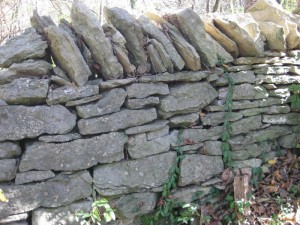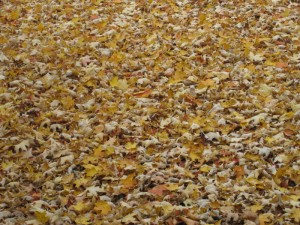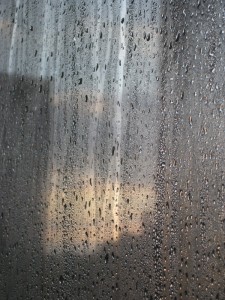Lately I’ve been thinking about how a task can be transformed by a sense of ritual. Ritual lends weight to what we’re doing. To clear space in our mind and schedule for a particular task is to acknowledge its importance. It says there is nothing we should be doing instead, and no reason to hurry through this moment on the way to the next thing. That alone is a relief, and all too rare. Ritual invites us to be fully present, to set aside anything else pulling at our attention and focus on the one thing in front of us.
Cooking dinner can be that kind of experience on days when I clear the countertops, turn on “All Things Considered,” and set aside the time to chop, saute, and simmer. Other days it’s a chore I squeeze in between other things, hurrying on to the next thing I need or want to do. The difference is whether I make space around it and become present in doing it. Ritual encourages presence, attention.
I remember as a child watching my father polish his shoes. He had a box where he kept everything he needed: the round tin of dark polish, the cotton rag saturated with its orange-brown color and oily scent. He would spread a newspaper on the floor to mark his work space, then open a tin and rub the cloth over it in a circular motion. After he worked the polish into the leather he would take up the wide wooden brush with soft black bristles, placing his hand inside the shoe to hold it and brushing with long sweeping strokes until it shone. I can still hear the thump of the brush against the shoe, the whisper of bristles across its polished surface. Then he folded the newspaper and threw it away, carried the box and gleaming shoes back to where they belonged.
I remember my mother preparing to iron, sprinkling clothes with water from a Coke bottle fitted with a metal-capped cork, its rounded surface filled with holes like a salt shaker. There was the muted sparkle and splash of water inside the glass bottle and the dark spots of moisture on cotton. She rolled up the clothes for the dampness to permeate, with an extra sprinkle over the bundle for good measure. With its hiss and rising steam, the transformation of rumpled fabrics into crisp, clean, finished laundry, ironing didn’t look like a chore. It looked like an important part of the week.
As I didn’t have responsibility for doing them, those tasks never appeared to be a burden. Instead they seemed special, meriting the time set aside for them. To a child fascinated by its particular tools, the job was clearly important. It offered elements perhaps of pleasure, but at the very least of satisfaction. I liked ironing handkerchiefs and helping to brush shoes.
I don’t know if my mother and father brought the same attention to their tasks that I brought to watching them. I was free to do something else if I grew bored, while they had to see the job through. And having raised a family myself now, I’m sure they had other things on their mind. Perhaps it’s easier to be mindful about someone else’s work.
Nonetheless, I think that how they went about their work taught me something of value. Ritual creates space around something important. When we turn the pages of a magazine, a few words on a large field of white rivets our attention. In the same way, we can put focus on the most important aspects of our lives by giving them breathing room. We add meaning to our lives when we notice what they contain. We elevate our work when we set it apart through the simple rituals that center us in the moment and ground us in our lives.
What are the tasks that give you satisfaction? Are they enhanced by a ritual of some kind?










